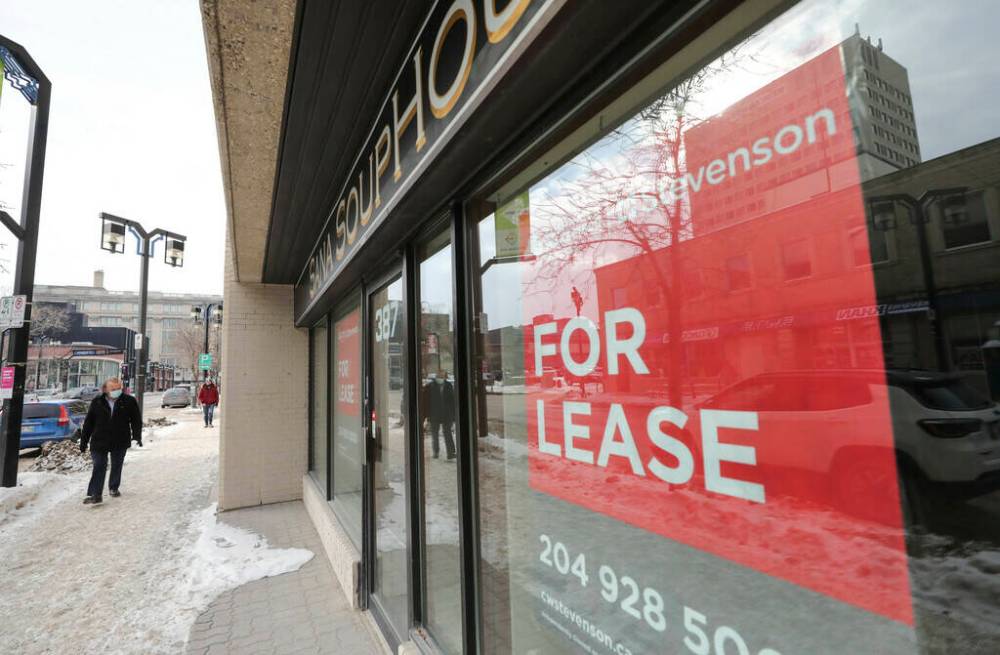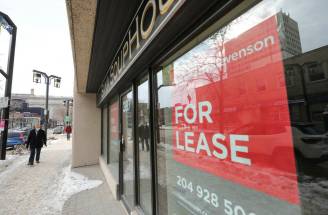Combined effort needed to reshape downtown
Read this article for free:
or
Already have an account? Log in here »
To continue reading, please subscribe:
Monthly Digital Subscription
$0 for the first 4 weeks*
- Enjoy unlimited reading on winnipegfreepress.com
- Read the E-Edition, our digital replica newspaper
- Access News Break, our award-winning app
- Play interactive puzzles
*No charge for 4 weeks then price increases to the regular rate of $19.00 plus GST every four weeks. Offer available to new and qualified returning subscribers only. Cancel any time.
Monthly Digital Subscription
$4.75/week*
- Enjoy unlimited reading on winnipegfreepress.com
- Read the E-Edition, our digital replica newspaper
- Access News Break, our award-winning app
- Play interactive puzzles
*Billed as $19 plus GST every four weeks. Cancel any time.
To continue reading, please subscribe:
Add Free Press access to your Brandon Sun subscription for only an additional
$1 for the first 4 weeks*
*Your next subscription payment will increase by $1.00 and you will be charged $16.99 plus GST for four weeks. After four weeks, your payment will increase to $23.99 plus GST every four weeks.
Read unlimited articles for free today:
or
Already have an account? Log in here »
Hey there, time traveller!
This article was published 18/04/2022 (1332 days ago), so information in it may no longer be current.
Employment in Canada has recovered from the worst effects of the COVID-19 pandemic. Winnipeg’s central business district, however, is still a place of echoing corridors and empty offices because a great many of the people who used to work there are now working from home.
Technology and the pandemic combined to give professional, administrative and technical personnel both the means and the incentive to steer clear of the downtown office buildings where they used to work. Spare bedrooms and family rooms in the leafy suburbs have been turned into home offices.
Families have found more ways to combine child-rearing and office work and to hold work-related meetings by video conference.
Statistics Canada’s March labour-force survey found 20.7 per cent of Canadian workers work from home most of the time. A further 5.9 per cent of people with jobs were in hybrid arrangements, working sometimes from home and sometimes at the employer’s place of business.
Statistics Canada’s March labour-force survey found 20.7 per cent of Canadian workers work from home most of the time.
That adds up to more than a quarter of yesteryear’s commuters who now stay home. These March figures reflect a small decline from February in the numbers usually working from home and a small increase in hybrid arrangements.
Canada’s provincial health authorities are no longer ordering employers when to shut their offices and when to open them. The corporations and government departments that account for most central business district employment have to figure out for themselves, in discussion with their employees, who is going to work from home and who is going to turn up at the office.

Throughout industry, however, the strengths and weaknesses of remote-work arrangements are well understood. It is also universally known that densely-packed offices can be places of contagion any time a new virus arises. It therefore seems likely that Winnipeg’s central business district, as in other Canadian cities, is now about as full of office workers as it is going to get for the foreseeable future.
The general level of employment in Canada appears to have stabilized after its post-pandemic bounce-back. The number of employed people now exceeds the number who had jobs before the pandemic. The March unemployment rate, at 5.3 per cent, is the lowest the statistics agency had ever found by the counting method it has used since 1976. It is therefore unlikely that a further post-pandemic bounce-back will bring more workers downtown. The rebound is over.
The March unemployment rate, at 5.3 per cent, is the lowest the statistics agency had ever found by the counting method it has used since 1976.
Winnipeg and Manitoba need to accommodate the wishes of professional, technical and administrative workers and their employers and ensure they can shape rewarding lives in this new pattern of remote work. Manitoba has been losing market share in that segment of industry. Technology and the virus have shifted the work environment, and families have voted with their feet in favour of spending more time in their home offices.
The owners of downtown buildings will gradually find new users for their underused properties. The city and the province however, have to provide roads, bridges, bus lines and public services in the most efficient way that supports a strong and sustainable economy.
Mayor Brian Bowman and city council should lay these issues before Premier Heather Stefanson and ask for some careful thought about the shape of post-pandemic Winnipeg. The municipality and the province between them, as huge employers in Winnipeg, will directly influence the city’s shape.
They should put their heads together and figure out what this community should do with its underused downtown.








